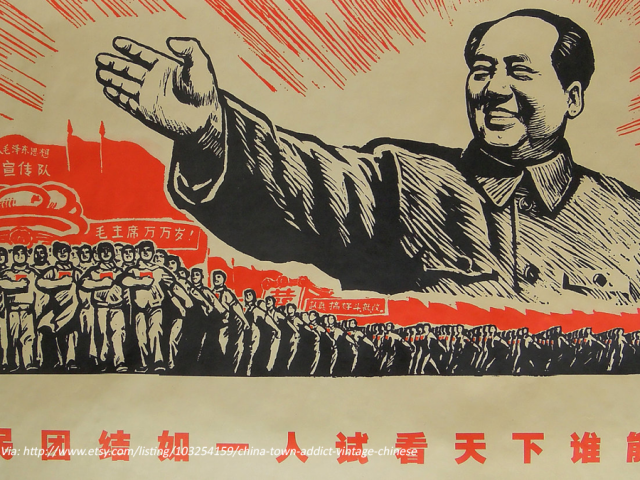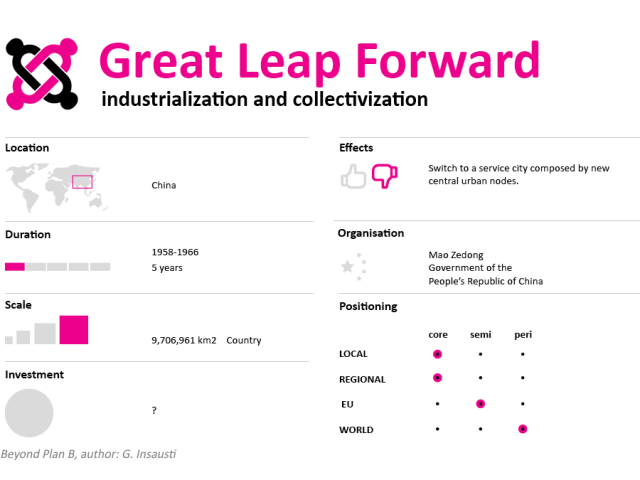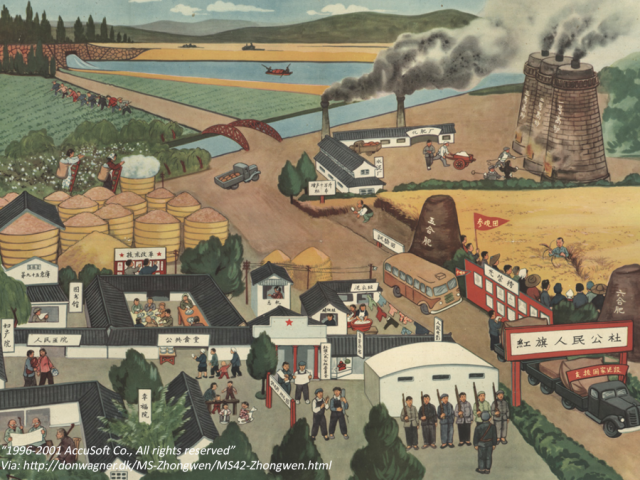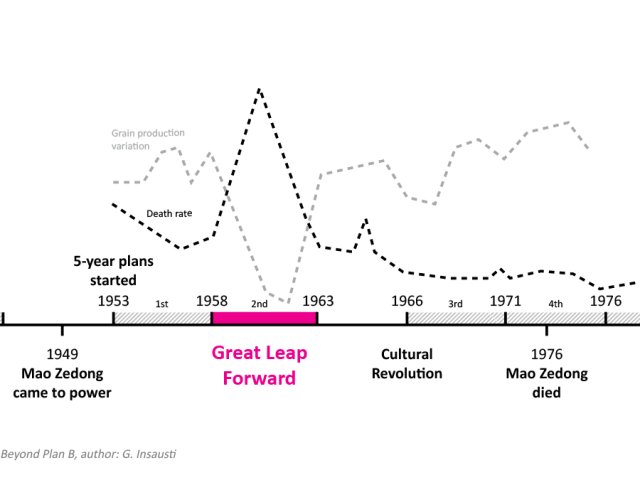The rapid transformation of China’s vast population from a primarily agrarian economy into a modern communist society through the process of agriculturalization and industrialization.
Situation
- After Mao Zedong established the ‘People’s Republic of China’ he famously announced: “The Chinese people have stood up.”
- China was one of the world’s poorest countries and did not have an advanced economy.
- China’s economy consisted solely of agricultural and farming skills.
- Previously, China imported all of its industrial products that was needed from the Western World and Japan.
Objectives
- China wanted to be self sufficient when producing industrial goods and completely independent from the Western World and Japan.
- Establish China as a major economic power, no matter what the cost.
- Mao Zedong wanted to transform China from a primarily agrarian economy into a modern communist society.
Assets
- China had more than a million manual labourers.
- Use agricultural goods to purchase power.
- Support of the USSR
Strategy
- China adopted the Soviet five-year methodology.
- It used the USSR knowlege and support to enhance industrial plants and agricultural production.
- China paid back the Russians with agricultural goods.
- Using agriculture as the backbone of China, the great leap forward was attempted so big changes could occur.
- Mao redistributed more than half of chinas property after the violent coup of “Ge Ming”, a revolt that allowed the peasants to expropriate landowners.
- All properties had to be divided in equal measure to avoid the development of an upper class of farmers.
- In order to create an equal society, communes were established in 1958. This system applies all over China.
- China set up approximately 25,000 communes, with 5,000 households each.
Actions
- The people’s ‘Republic of China’ was established on October 1, 1949 by Mao Zedong.
- 1953 -1958, Mao Zedong introduced the five-year methodology.
- 1960 - 1962, World’s biggest famine.
- In 1962, Deng Xiaoping became the reformist leader of China.
- 1966 -76 Mao Zedong set up a cultural revolution.
- Mao Zedong dies along with the cultural revolution in 1976.
Effect
- The GLF was a huge disaster, resulting in the Great Famine.
- To surpass industrial difficulties, Mao called on every labourer to produce steel by building blast furnaces on each farm instead of cultivating their fields to bring in the much-needed crops.
- The expected great leap forward ended with fallow fields and no crops.
- The clearest and most significant result was the death of millions of people. Some historians estimated 30 million deaths, most of them very young children.








